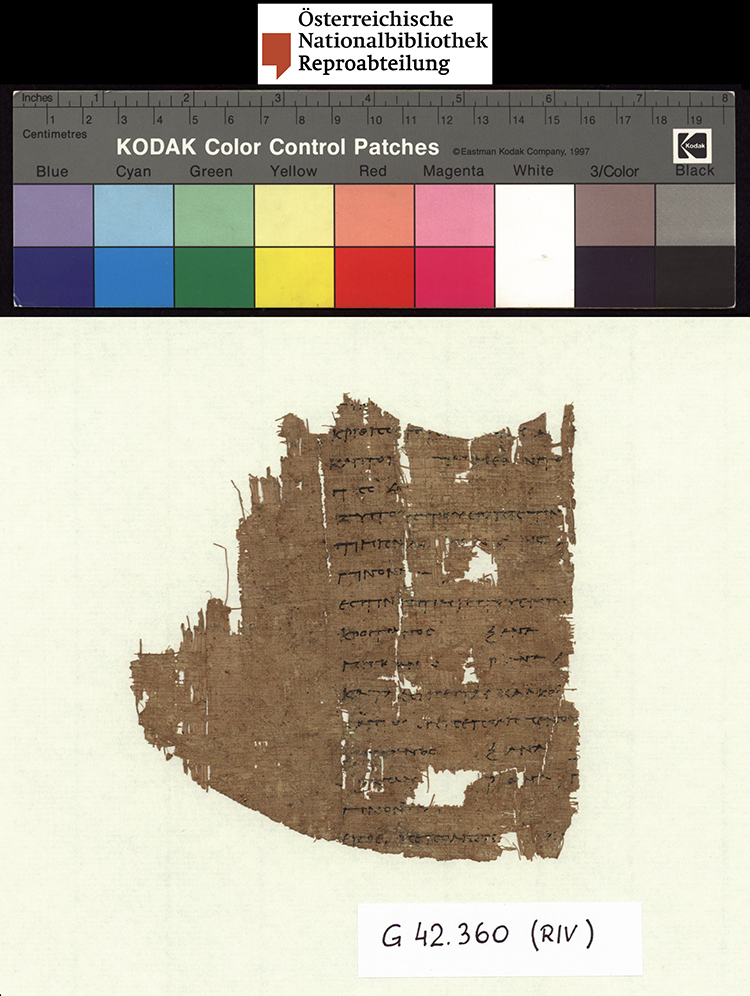G 42360 Recto
G 42360 recto: Dimensions: 13 x 12.6 cm. Date: mid- to late III century BC. Provenance: meris of Polemon, Arsinoites. The style of handwriting allows this fragment to be dated to the middle or the second half of the third century BC, which agrees well with the date probable for G 42359 recto. With this dating agrees the fact that all Ptolemaic papyrological attestations of mekon, ‘poppy’, which figures twice in this text, as a cultivated crop seem hitherto to come from the middle and the second half of the third century BC. The place names mentioned in G 42359 recto and the close association between the two fragments in the cartonnage suggest the same provenance also for this fragment: the meris of Polemon of the Arsinoite nome. A further indication of the origin of this text from the meris of Polemon might be, if correctly interpreted, the place name Oxyrhy[nchon (?) at the end of line 8 of G 42360 verso. The Arsinoite nome as the general area of provenance of this fragment is also suggested by the fact that the vast majority of Ptolemaic papyrological references to the cultivation of mekon known to date come from or refer to the Arsinoites. Although most of the vocabulary of this fragment is well attested in numerous documents from Hellenistic Egypt, particularly in those belonging to the Zenon archive, in terms of its content no close parallels seem to be available in the papyrological evidence published to date. It appears to be an account in which the quantity and financial value of various agricultural products: barley, kroton and poppy, as well as beer, are listed and added together. The text seems to be divided into smaller, probably thematic (e.g. barley with beer, followed by kroton with poppy), sections by the word ginontai at the end of each part. The context seems to suggest a private, rather than an official, background for this account. A large or, less likely, a medium-sized estate in the Arsinoite nome, where commercial and oil crops favoured by the Hellenic immigrants, such as poppy and kroton, were grown, appears the most plausible place of origin. The papyrus was published by C. A. La’da as CPR XXVIII 4.

